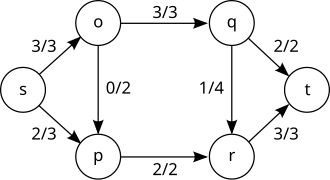overview.md (3802B)
1 # Value Flow Algorithms 2 3 This section is about what computer programs (or humans with pencil and paper and a lot of work) can do with Value Flows economic networks once they are constructed on the Web or in a database. 4 5 ## Network-based algorithms 6 7 * **Dependent Demand** constructs schedules for operational economic networks from recipes 8 * Many other scheduling algorithms can be used over the same recipes. 9 * [Gantt charts](https://en.wikipedia.org/wiki/Gantt_chart) are a popular network schedule visualization. 10  11 * **Critical Path** is another scheduling algorithm that analyzes a network of processes to figure out the bottlenecks, the processes that need special attention. 12 * **Value Rollups** summarize the total value of all inputs to the resulting output from a recipe. 13 * **Value Equations** determine how income should be distributed according to contributions to a deliverable item. 14 * **Track and Trace** follow the path of a resource forwards (to where it went) and backwards (where it came from, and what other resources went into it). 15 * **Provenance** is like Trace, focusing on the path of a resource and all of the other resources that went into it. 16 * **Cash Flow** is mostly about money, but could also apply to other resources, looking at the inflows and outflows on a timeline, historical in the past, forecasted in the future. 17 * **Economic and Ecosystem Analysis**: 18 * [System Dynamics](https://en.wikipedia.org/wiki/System_dynamics) 19 * [Systems Ecology](https://en.wikipedia.org/wiki/Systems_ecology) including [Energy Flow Analysis](https://en.wikipedia.org/wiki/Energy_flow_(ecology)) 20 * [Input-Output Analysis](https://en.wikipedia.org/wiki/Input%E2%80%93output_model) 21 * [Environmentally Extended IPO Analysis](https://en.wikipedia.org/wiki/Environmentally_extended_input-output_analysis) 22 * [Life Cycle Analysis](http://www.openlca.org/project/graphic-modeling/) 23 * [Material Flow Analysis](https://en.wikipedia.org/wiki/Material_flow_analysis) 24  25 26 * **Network Flows** is a general name for all of those algorithms and many many more. See [Flow Networks](https://en.wikipedia.org/wiki/Flow_network) on Wikipedia and elsewhere. 27 28 There are similarities and differences among the algorithms: 29 * Scheduling algorithms and cash flows use time-phasing: placing planned or reported events on a timeline. 30 * Dependent Demand schedules backwards from an end date; Critical Path schedules forwards from a start date. 31 * Dependent Demand does an explosion: breaking down the end resource of a recipe into a tree of components and processes. 32 * Value Rollups do an implosion: summarizing all the inputs of the exploded tree of components and processes into a total value. 33 * The Economic and Ecosystem algorithms use [Input-Process-Output Models](https://en.wikipedia.org/wiki/IPO_model) 34 * All of those algorithms work on flow networks, otherwise known as directed graphs, composed of nodes and links between them. 35 36  37 38 ## Agent-based algorithms 39 40 * [Agent-Based Models](https://en.wikipedia.org/wiki/Agent-based_model) 41 * [In biology](https://en.wikipedia.org/wiki/Agent-based_model_in_biology) 42 * [In economics](https://en.wikipedia.org/wiki/Agent-based_computational_economics) 43 * [In sociology](https://en.wikipedia.org/wiki/Computational_sociology), including [Social Network Analysis](https://en.wikipedia.org/wiki/Social_network_analysis) 44 * [Complex adaptive systems](https://en.wikipedia.org/wiki/Complex_adaptive_system)